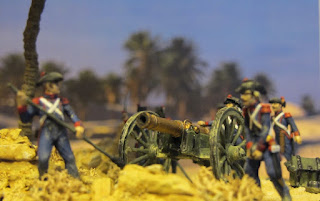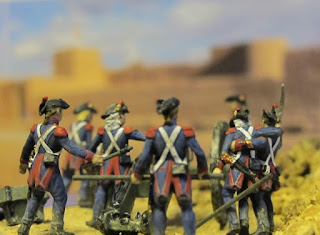In the year 1683 the Ottomans started their second attempt to conquer Vienna, the seat of the Emperor of the Holy Roman Empire and the door to further conquest in Europe. It was a major effort with a huge army (170.000 men at the start of the campaign) - too much for the Emporer, who left the City before the Ottomans arrived. After an epic two months siege an allied relief army (Imperial and Polish troops) reached the outskirts of Vienna and in the final battle the Ottomans were decisively beaten and had to retreat the way they had come.
The moment depicted is an attack by Polish troops on an Ottoman defensive line held by janissaries during the battle. After their long and exhausting march to Vienna the Poles put a final effort to overcome their Ottoman adversaries.
The diorama
The figures are from Zvezda (Poles) and Orion (Ottomans). For reaching the interaction between the figures some conversions had to be made and also the Poles had to be trimmed additionally to reach the desired appearance (originally they were Russian streltsi). Uniforms were not very developed in this period, so each figure has its own colours or colour variations. The flags are made of paper and handpainted. The tree is scratch built of wire, putty and foliage by Noch.
Photos (click to enlarge)
Video (Youtube)
Sources
John Stoye - Die Türken vor Wien
Simon Millar - Vienna 1683 (Osprey Campaign 191)
Richard Brezezinski - Polish armies 1569-1696 Part 1 (Osprey Men-at-Arms 184)
Richard Brezezinski - Polish armies 1569-1969 Part 2 (Osprey Men-at-Arms 188)
David Nicolle - Armies of the Ottoman Turks 1300-1774 (Osprey Men-at-Arms 140)
David Nicolle - The Janissaries (Osprey Warrior 58)
























